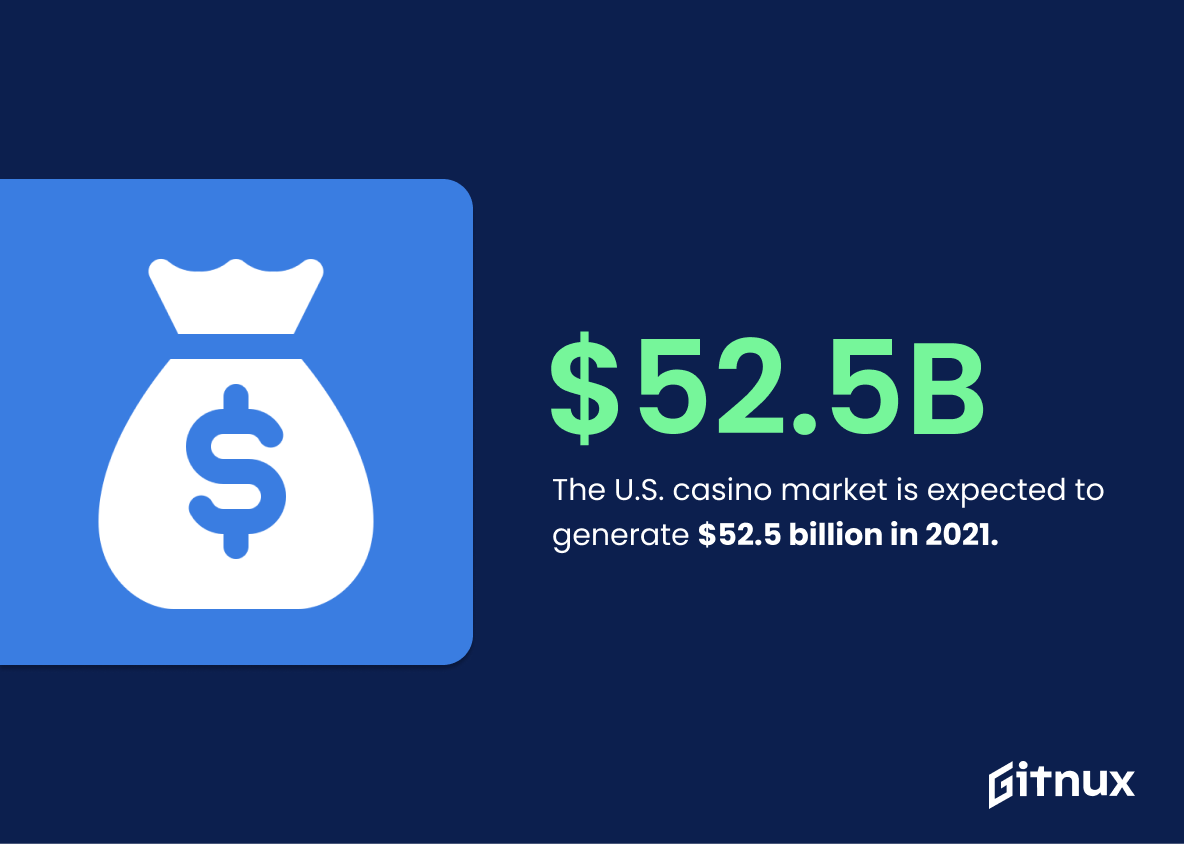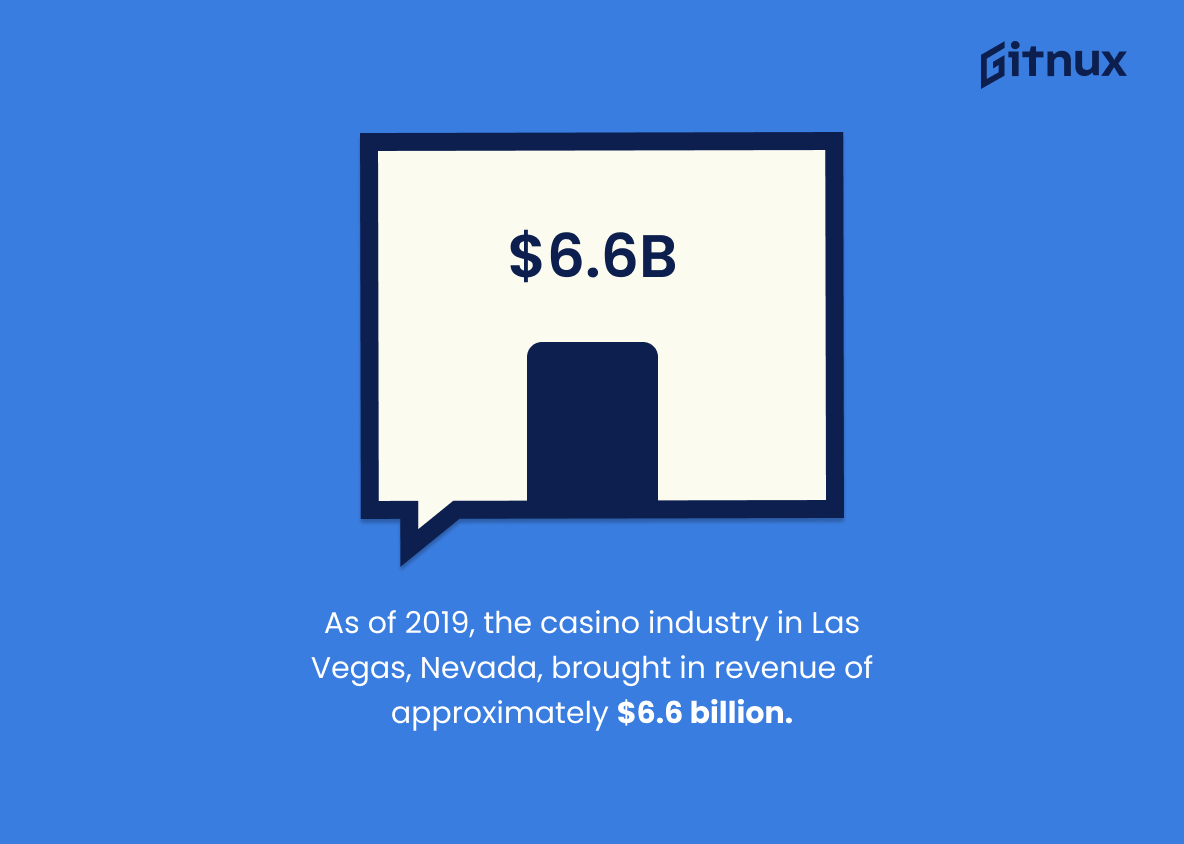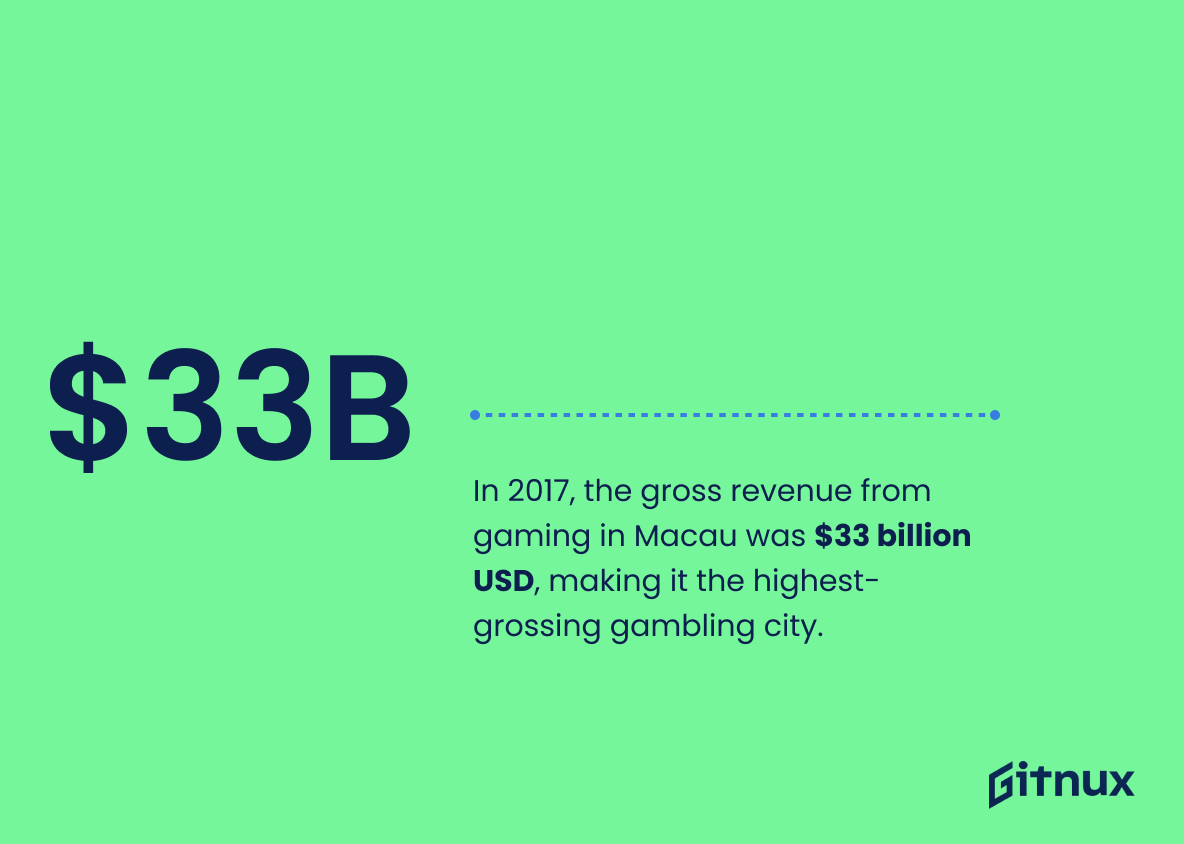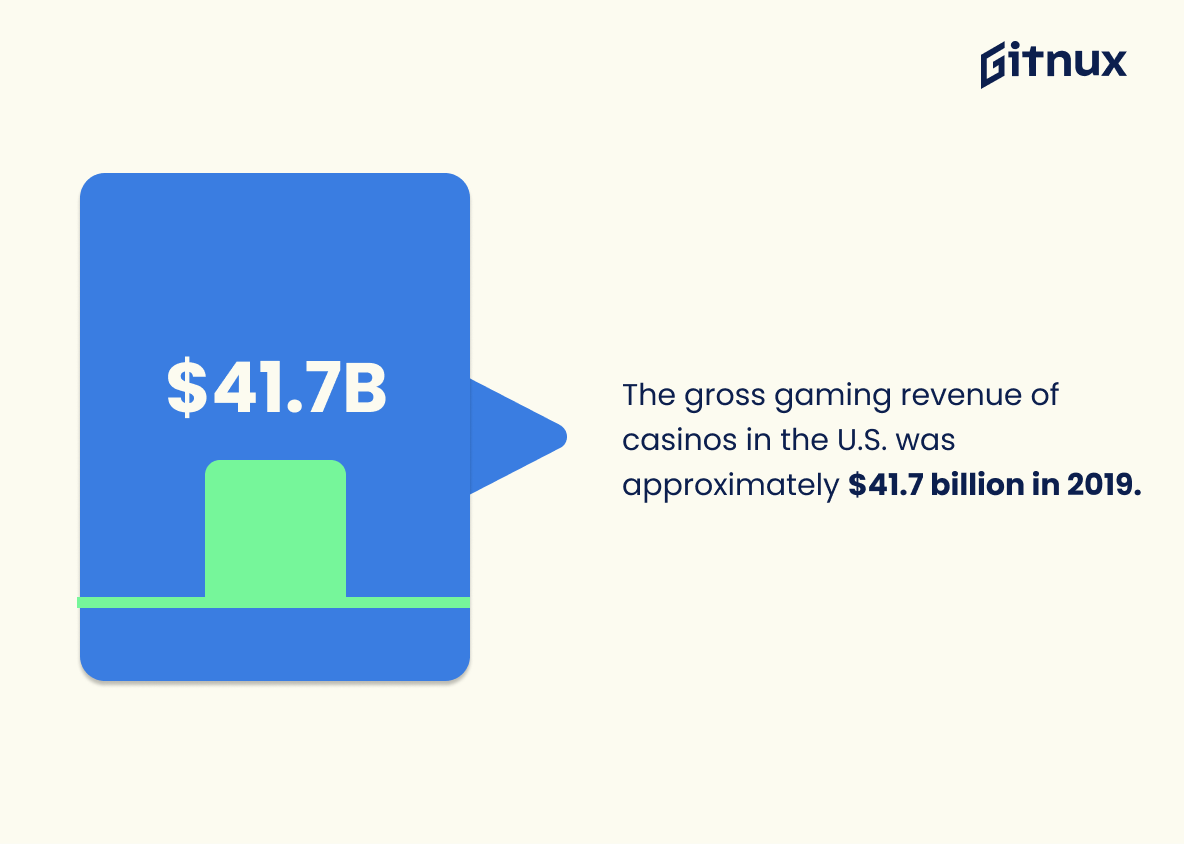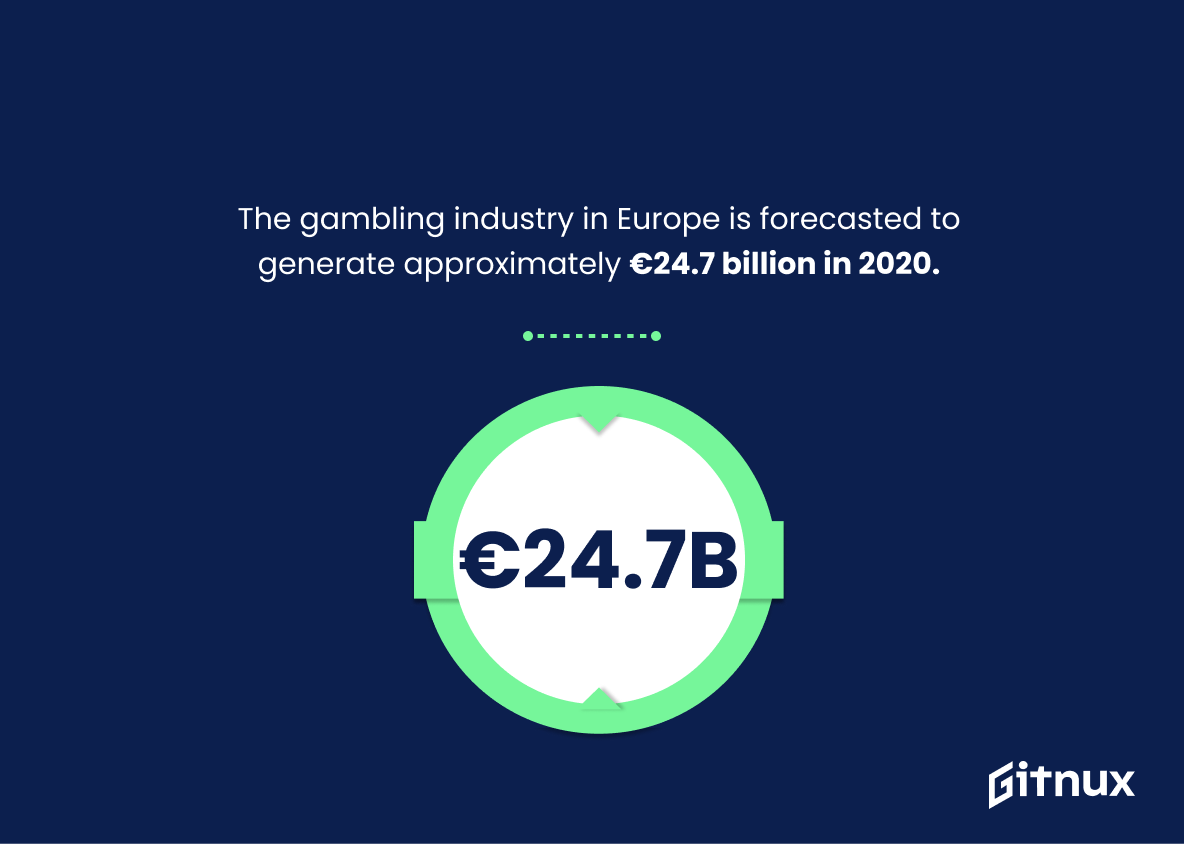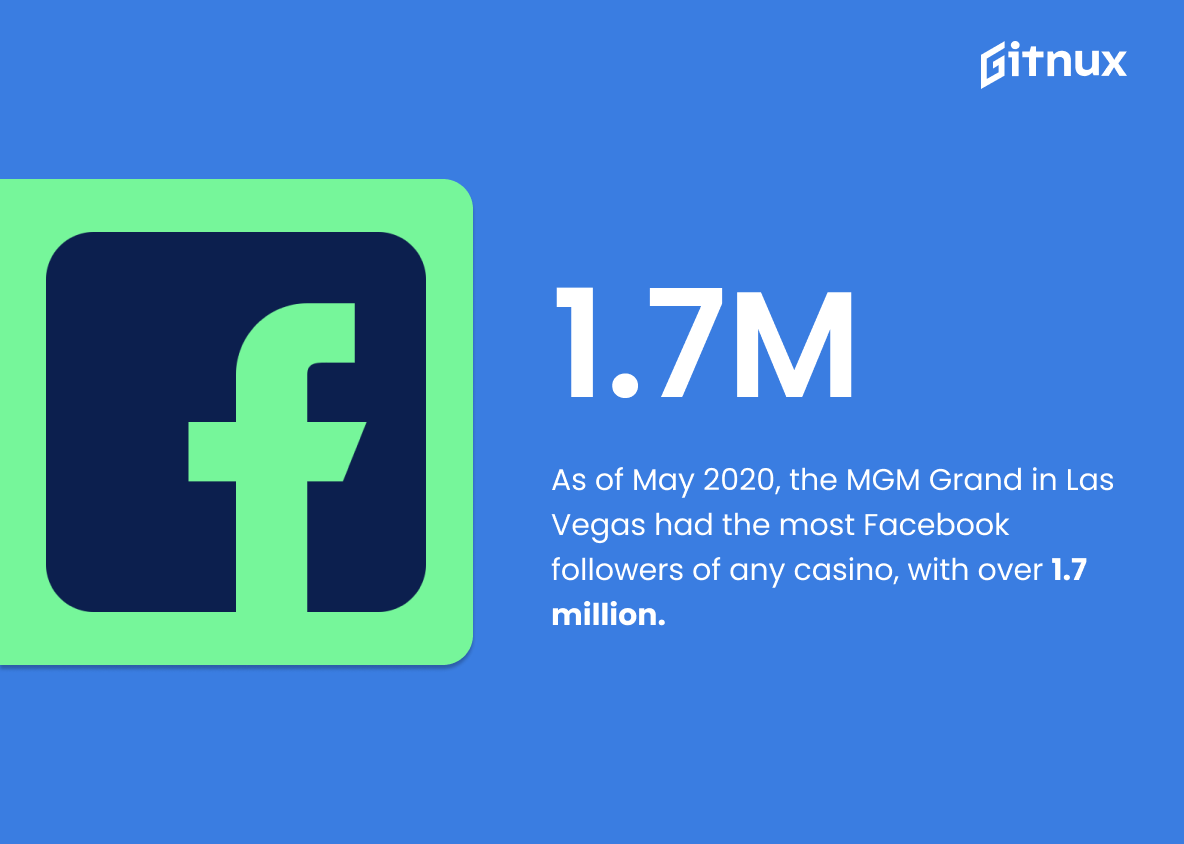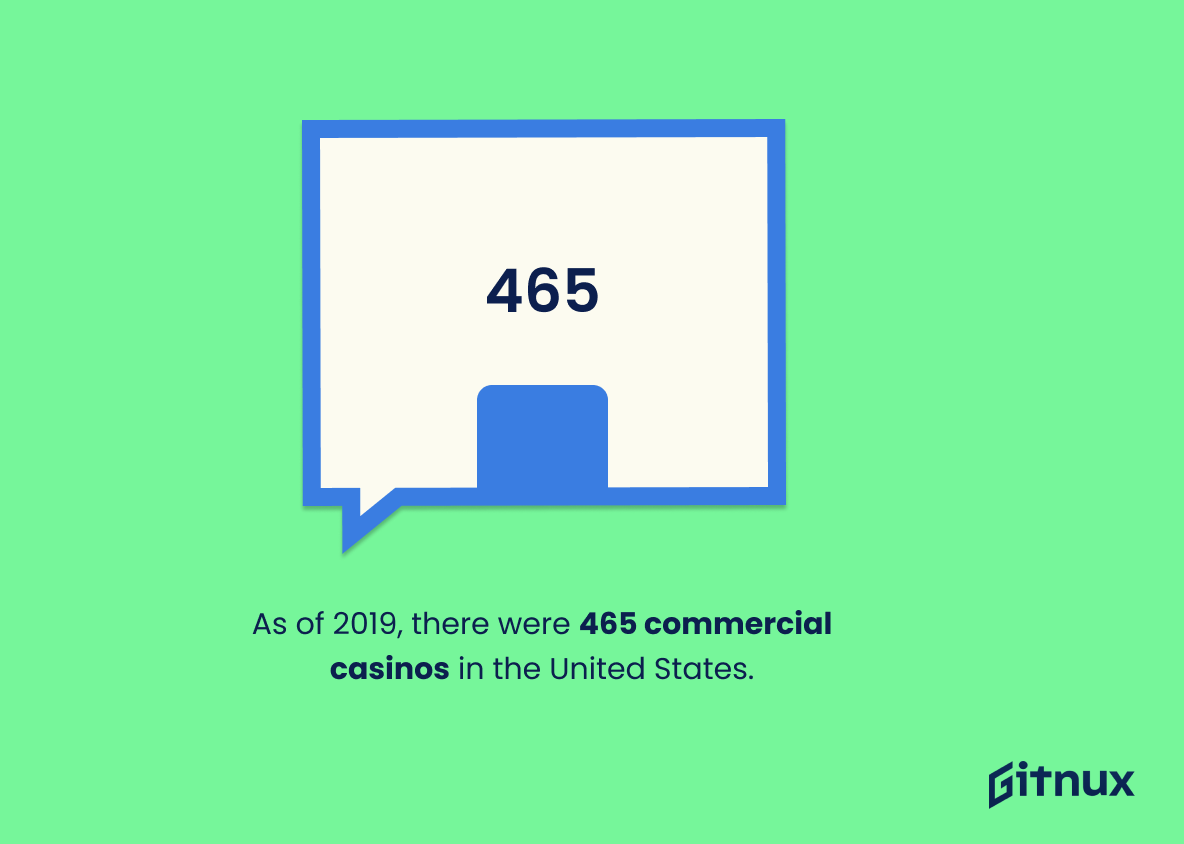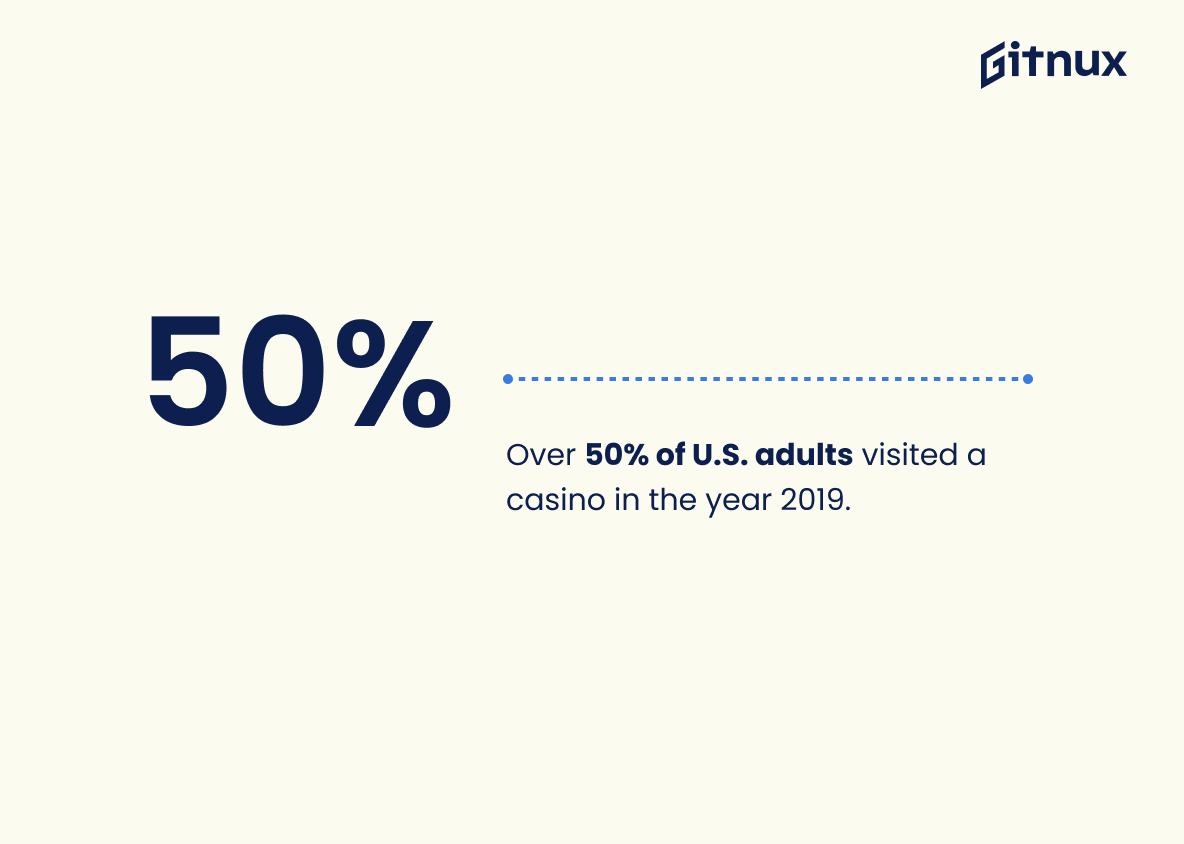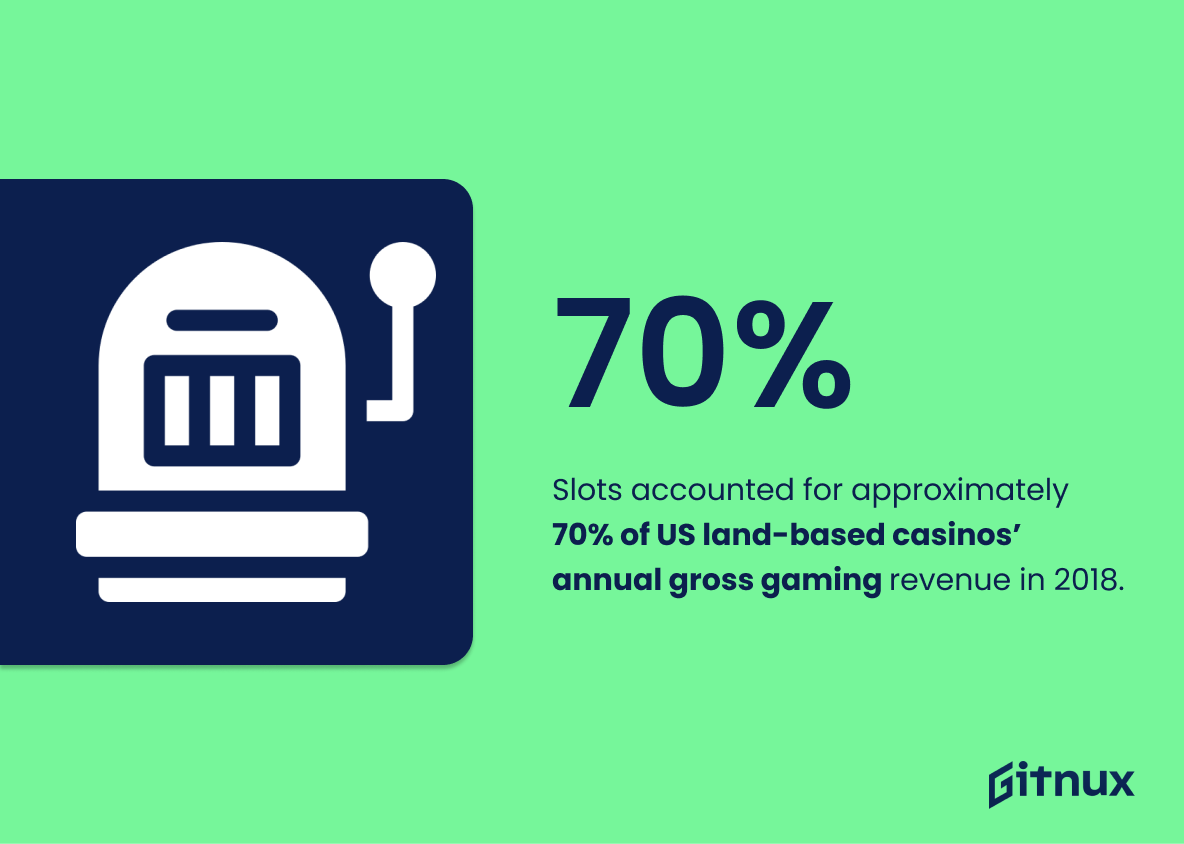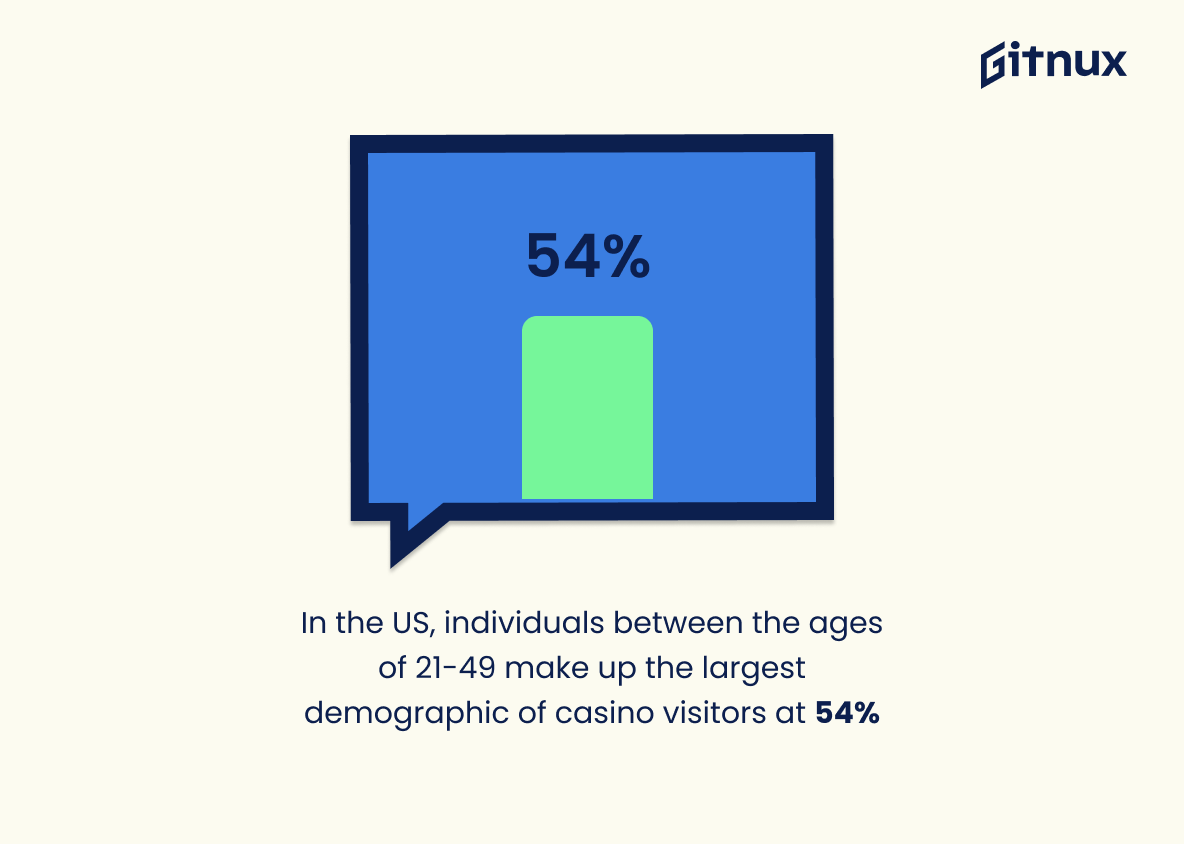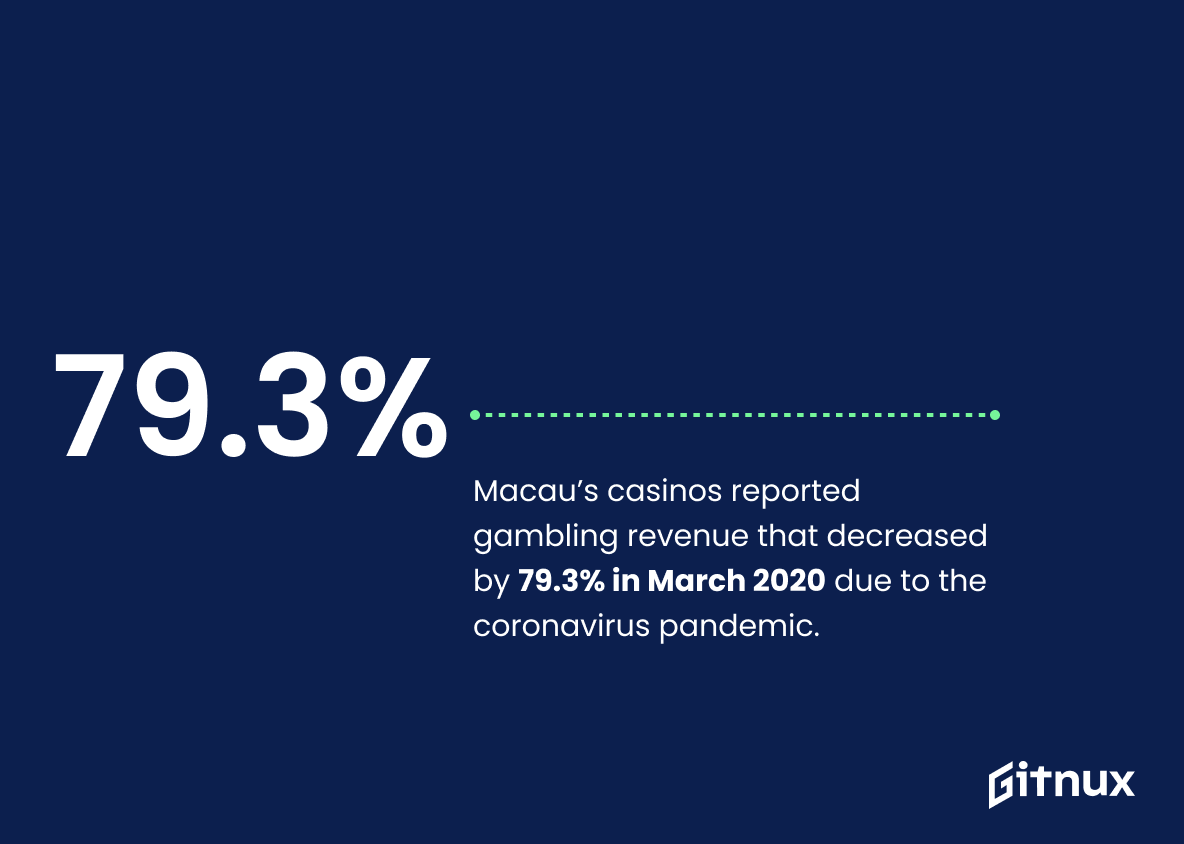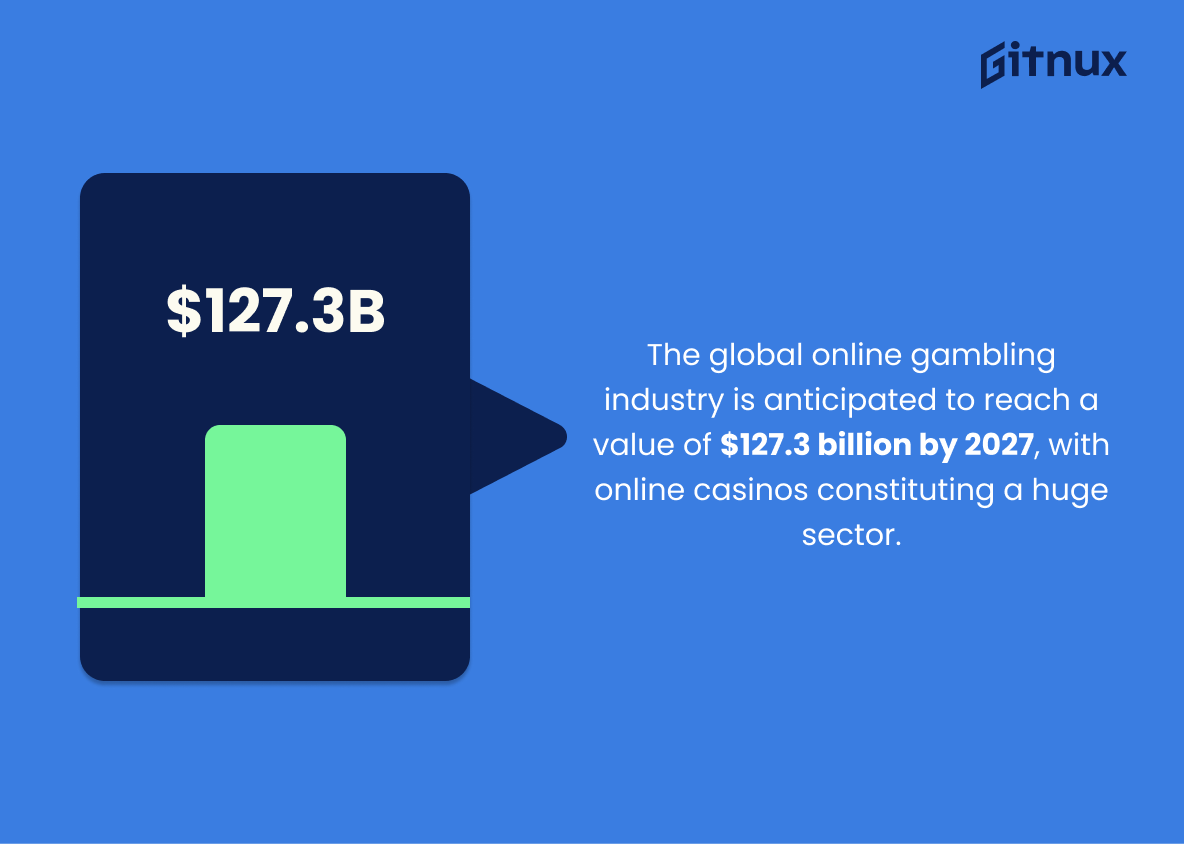Embarking on a virtual journey in a world fueled by stakes, games of chance, and unabating adrenaline – welcome to the world of casinos. However, beneath the ambiance of flashing lights and resonating slot sounds, paints a picture only numbers can articulate – the fascinating landscape of casino statistics. This blog post aims to delve into the intriguing realm of casino statistics, offering invaluable insights into revenue trends, player behavior, online vs. physical casinos and a panorama of aspects that shape the global casino industry. Whether you’re a thrill-seeking gambler, an enthusiastic statistician, a potential investor, or just a curious reader, these hard facts and figures throw the dice on secrets you wouldn’t want to miss out on.
The Latest Casino Statistics Unveiled
The U.S. casino market is expected to generate $52.5 billion in 2021.
A leap into the realms of the U.S. casino market unveils a fascinating jackpot of $52.5 billion projected for 2021. This ambitious estimation encapsulates not merely the potential earnings in store, but also acts as a powerful testament to the dynamic growth trajectory of the casino industry. Within the context of a blog post about Casino Statistics, this becomes especially significant. It paints a grand picture of just how enormous, lucrative and influential this industry has become. It serves as a magnet attracting seasoned investors, game developers, and marketing strategists by offering insights into market trends and investment decision-making. An understanding of this statistic does not just quantify potential profits but sheds light on the weighty role the casino industry plays in the U.S. economy at large.
As of 2019, the casino industry in Las Vegas, Nevada, brought in revenue of approximately $6.6 billion.
Primed in the shimmering oasis of Nevada’s desert, the Las Vegas casino industry demonstratively intersects business prowess and consumer allure as it manifested a dazzling revenue of $6.6 billion in 2019 alone. This brilliant feat of economic dynamism pitches Las Vegas as a crucial cog in the global gaming machine, offering deep ramifications on our understanding of the broader casino industry’s potency. This revenue figure isn’t simply a testament to Las Vegas’s glitz and glamour, but a compelling barometer reflecting the robust health of the casino sector, thus infusing more than just neon lights into our discussions and conceptions of casino statistics.
In 2017, the gross revenue from gaming in Macau was $33 billion USD, making it the highest-grossing gambling city.
The dazzle and allure of casino gaming often leaves players curious about the epicenters of such grand monetary exchanges. And as numbers often paint a more vivid picture, let us draw your attention to the oriental city of fortune, Macau. In the year 2017, Macau redefined high-stakes by grossing an astounding $33 billion USD from gaming itself, earning its laurels as the highest-grossing gambling city. This revelation not only intensifies Macau’s reputation as the epicenter of casino gaming, but also serves as a testament to the tremendous influence and economic potential of the casino industry. Thus, in the carousel of casino statistics, this piece of data definitely hits the jackpot, helping us benchmark the global gambling landscape.
The gross gaming revenue of casinos in the U.S. was approximately $41.7 billion in 2019.
Peeling back the curtain on the vibrant casino industry, we delve into the tantalizing figure of $41.7 billion, the gross gaming revenue of U.S. casinos in 2019. A figure reflective of the industry’s pulsating heart, it transcends being just a number, painting a vivid picture of the financial titan that the U.S. casino industry is. This eye-popping sum underscores the casino’s essential role as a titanic contributor to the economy, the lifeblood for hundreds of thousands of jobs, and a pivotal player in tourism. This figure, in its stark economic brilliance, is a testament to the casino industry’s dynamism, marking the American gaming landscape as one of the most potent in the world. It not only provides context for understanding the scale and potency of this sector, but also serves as an economic barometer for its statewide impact and potential growth trajectory. So, when we talk casino statistics, this $41.7 billion isn’t just chump change, it’s the heartbeat of an industry that never sleeps.
The gambling industry in Europe is forecasted to generate approximately €24.7 billion in 2020.
Highlighting the forecasted staggering revenue of €24.7 billion for the European gambling industry in 2020 paints a vivid picture of the significant economic footprint casinos hold. It underscores their mighty role not only as lucrative business ventures but also as potential boosters of local and national economies. With such a mammoth turnover, the statistic sets the stage for discussing the financial dynamics, potential growth areas, and relevant concerns in the industry. It’s a dramatic opener, sparking interest and setting the tone for an engaging conversation on casino statistics.
As of May 2020, the MGM Grand in Las Vegas had the most Facebook followers of any casino, with over 1.7 million.
Diving into the magnetizing pull of the aforementioned statistic, let’s immerse ourselves in a captivating fact. Landing in the spotlight of the social media scene, as of May 2020, the MGM Grand in Las Vegas shatters records by boasting the highest number of Facebook followers among casinos, exceeding the 1.7 million mark.
This electrifying fact injects a dash of intrigue into a casino statistics blog post for various reasons. Firstly, it accentuates the MGM Grand’s staggering online popularity, illuminating the effectiveness of their social media strategies. Painting a vivid picture of a platform where millions tune in for updates, promotional offers, or simply a hint of the Las Vegas charm, it underscores the potency of digital reach in this modern age.
Furthermore, translating this massive follower base into prospective visitors or loyal customers promises bountiful opportunities and potential revenues, providing a valuable angle for economic analysis. Ultimately, unfurling this statistic weaves an engaging narrative of success, influence, and a testament to the power of digital engagement in the competitive landscape of the casino industry.
As of 2019, there were 465 commercial casinos in the United States.
Unveiling the magnitude of the commercial casino landscape in the United States, the 465 establishments operating in 2019 present a vivid depiction of an industry pulsating with vibrancy and potential. This numerical insight commands attention as it unfurls the sheer scale of the casino realm, providing readers with a critical yardstick to comprehend not only the industry’s growth over the years, but also its socio-economic impact. Couched within this dataset lies the untold story of countless jobs provided, billions in revenue generated and a labyrinth of entertainment options offered to the American populace.
Over 50% of U.S. adults visited a casino in the year 2019.
Unveiling the figure– ‘Over 50% of U.S. adults visited a casino in 2019’ magnifies the enthralling allure of the gamble domes in the consciousness of the U.S populace. This crystal clear insight, illuminates not only the popularity of casino-based entertainment, but also steps into dimensions of potential market opportunities, consumer behaviour dynamics, and the captivating influence of the casino industry on the American lifestyle. This paints in vibrant strokes the potential for growth within this sector, fathoming the tidal shift in public acceptance towards such endeavours. It is a potent brew of information for businesses and policymakers alike, directing their strategies for the foreseeable future.
Approximately 34% of Australians gamble at a casino at least once a year.
Illuminating the prevalence of gambling in the Land Down Under, this intriguing figure tells us that roughly one in three Aussies tests their fortunes at the casino tables each year. This percentage gives readers a more tangible grasp of the gambling landscape, underscoring the significance and ubiquity of casino gaming in Australia’s cultural fabric. The influence of these gaming hubs is more far-reaching than may initially be perceived, shaping consumer spending, tourism, and perhaps even social dynamics. An understanding of this percentage enables us to make more informed observations and discussions about the broader implications of casino culture. So, keep the dice rolling, this isn’t just a game of chance, it’s a window into a national pastime.
In the UK, 47% of respondents to a 2016 survey indicated that they had engaged in some form of online casino gambling in past four weeks.
Highlighting the statistic from a 2016 survey, wherein 47% of UK respondents confirmed engaging in online casino gambling within the past month, resonates strongly within our exploration of Casino Statistics. This figure not only provides a tantalizing glimpse into the burgeoning popularity of digital gaming platforms, but it also underscores a critical shift in the gambling landscape, necessitated by the digital age. Clearly, the traditional brick-and-mortar casino industry is no longer the sole vanguard of gambling entertainment. Insights like these help us chart the dynamic interplay between technology and gambling and forecast future trends in this lucrative industry.
Slots accounted for approximately 70% of US land-based casinos’ annual gross gaming revenue in 2018.
Dipping into the roulette of profitability in land-based casinos, it’s quite astounding to see the powerful role of slot machines. With the digital cherries, sevens, and bars weaving a tapestry that equates to approximately 70% of US land-based casinos’ annual gross gaming revenue in 2018, their significance can’t be slide under the rug. This compelling figure is like a royal flush without even touching the poker table, it reveals the pulsating heart of casino income – slot machines. A vital piece in our understanding of casino economics, it flags the extent to which these flashing, jingling machines with their spinning reels dominate the gaming floor and the revenue charts alike. This number, a jackpot in itself, potently underlines where the power lies in the buzzing world of gaming.
In the US, individuals between the ages of 21-49 make up the largest demographic of casino visitors at 54%
Highlighting this noteworthy statistic serves as a powerful insight into the preferred age group forming the highest traction in the casino industry. This intel paints a vivid picture of which age bracket the casino industry targets the most, thereby providing valuable insights for marketing strategies, game development, and service enhancements tailored to this distinct age set. Drawing attention to the dominance of the 21-49 age group in the casino visitor landscape isn’t just an interesting numerical snapshot. It’s a compass directing where resources and innovations can be focused to maximize customers’ engagement and casinos’ profits.
Macau’s casinos reported gambling revenue that decreased by 79.3% in March 2020 due to the coronavirus pandemic.
Painting a vivid picture of the dire impact of the unprecedented COVID-19 pandemic on the global casino industry, the staggering 79.3% nosedive in Macau’s gambling revenues in March 2020 underscores the sector’s unexpected vulnerability to external shocks. The correlation between global events and changes within the casino industry becomes strikingly prominent. This seismic shift invites profound reflection on the industry’s resilience strategies, risk management approaches, and the pressing need for innovation in offering alternative modes of operation. Far from a mere downtick in numbers, this statistic embodies an alarm bell, urging the entire industry down a path of rapid transformation and adaptation.
The global online gambling industry is anticipated to reach a value of $127.3 billion by 2027, with online casinos constituting a huge sector.
Unveiling the shimmering treasure on the horizon, the anticipated rise of the global online gambling industry to a remarkable $127.3 billion by 2027 is indeed a jackpot worth mentioning when diving into casino statistics. It’s like uncovering the golden truth behind the roulette wheel, giving the whole landscape of digital gaming a glowing aura of opportunity. The colossal presence of online casinos within this sector is like a royal flush in a high-stakes poker game, underscoring just how crucial they are in this big-picture scenario. This potential growth not only signifies the increasing attraction of such platforms, but definitely reinvents the traditional concepts of a glitzy casino, making online experiences almost tangible. Take a seat, place your bets, and watch as this domain flourishes, reshaping the future of gaming and gambling. Indeed, the house always wins, especially when the house is a virtual casino, ascendant in the internet age.
Casino customer visits in the United Kingdom (UK) increased from 25 million in 2009 to 36 million in 2017.
Peeling back the layers of this vibrant trend reveals a captivating narrative of casinos in the United Kingdom. The rising arc from 25 million customer visits in 2009 to 36 million in 2017 signals not just an ascendant trajectory but also underscores the vitality of the casino industry. A comprehensive understanding of this industry would be incomplete without acknowledging this significant growth. This significant 44% growth illuminates the expanding consumer engagement, revealing the industry’s morphing landscape over time. Drawing attention to this surge is vital for delineating the growth and future potential of the UK casino market in a blog post about Casino Statistics.
In terms of online casino gamblers, approximately 54.8% are men and 45.2% are women.
Diving deep into the realm of Casino Statistics and gender preferences, the intriguing discovery that 54.8% of online casino gamblers are men, as compared to a slightly lower proportion of 45.2% women, opens up an arresting dialogue. This quantitative revelation is crucial in shaping understanding and tailoring strategies for the online casino industry. From marketing initiatives to the design of games, this statistic serves as a compass guiding several components, ensuring they resonate with the dominant demographics. Moreover, it hints at the purchasing power, decision-making behavior, and gaming preferences of different genders, offering invaluable insight that could drive profitability and user engagement in the online gambling ecosystem. On the flip side, it might also provoke discussions on narrowing the gender-gap, thereby providing an inclusive and balanced platform for all.
In 2019, the casino gaming industry in Europe was worth approximately $22.4 billion.
Sprinkling the enchanting number of a $22.4 billion worth into our narrative, unlatches a doorway to the colossal empire of the European casino gaming industry. The luminosity of this figure sets the stage for a mesmerizing spectacle, illuminating the full magnitude of the industry in 2019. It sways as a lighthouse guiding our understanding of the formidable economic influence of casino gaming, underlining its role as a cornerstone within the leisure and entertainment sectors. This monetary beacon not only earmarks the industry’s financial prowess but also signposts the potential fiscal possibilities for entrepreneurs and investors, making our conversation on Casino Statistics remarkably rich and invigorating. This figure also acts as a yardstick for policymakers and regulators navigating the complex currents of the gambling industry, and for social scientists readying to delve into the societal and economic implications of this industry.
Slots make up the highest percentage of games that are available in online casinos in the United States.
When delving into the world of Casino Statistics in a blog post, it’s intriguing to note that the dazzling and spinning reels of slots constitute the majority of games in US online casinos. This vital snippet of information paints a vivid picture about the preferences of online gamblers, perhaps indicating a penchant for the thrilling unpredictability that slots offer. It’s likewise a crucial nod to the operators, directing their attention towards the best genre of online games to invest and expand on, in order to tap into this lucrative market demand. As such, the prevalence of slots plays a pivotal role in understanding the dynamics of customers and business in the online casino landscape.
Conclusion
To sum up, casino statistics provide fascinating insights into the intricacies of the gambling industry. Whether it’s to understand player behaviors, the profitability of different games, or the impact of online casinos on the market, these figures tell a rich story. The continuous growth of industry forecasts a bright future for both physical casinos and their online counterparts, particularly with increased technological innovations and regulatory changes. As players continue to seek new entertainment experiences and businesses strive to meet these evolving demands, we can expect to see these statistics continue to evolve – making the casino industry a thrilling arena to watch.
References
0. – https://www.www.worldatlas.com
1. – https://www.www.cdcgamingreports.com
2. – https://www.www.grandviewresearch.com
3. – https://www.www.bbc.co.uk
4. – https://www.www.bloomberg.com
5. – https://www.lcb.org
6. – https://www.www.statista.com
7. – https://www.www.vegasslotsonline.com
8. – https://www.www.casino.org
9. – https://www.aifs.gov.au
10. – https://www.www.americangaming.org
